先自我介绍一下,小编浙江大学毕业,去过华为、字节跳动等大厂,目前阿里P7
深知大多数程序员,想要提升技能,往往是自己摸索成长,但自己不成体系的自学效果低效又漫长,而且极易碰到天花板技术停滞不前!
因此收集整理了一份《2024年最新Java开发全套学习资料》,初衷也很简单,就是希望能够帮助到想自学提升又不知道该从何学起的朋友。
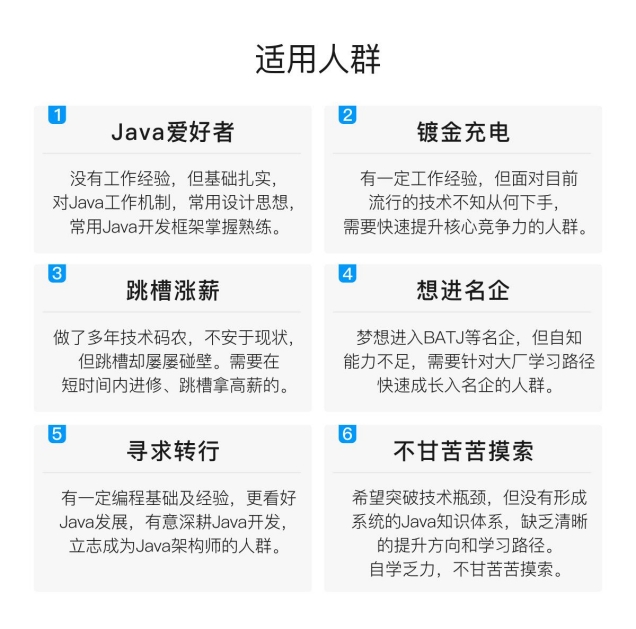
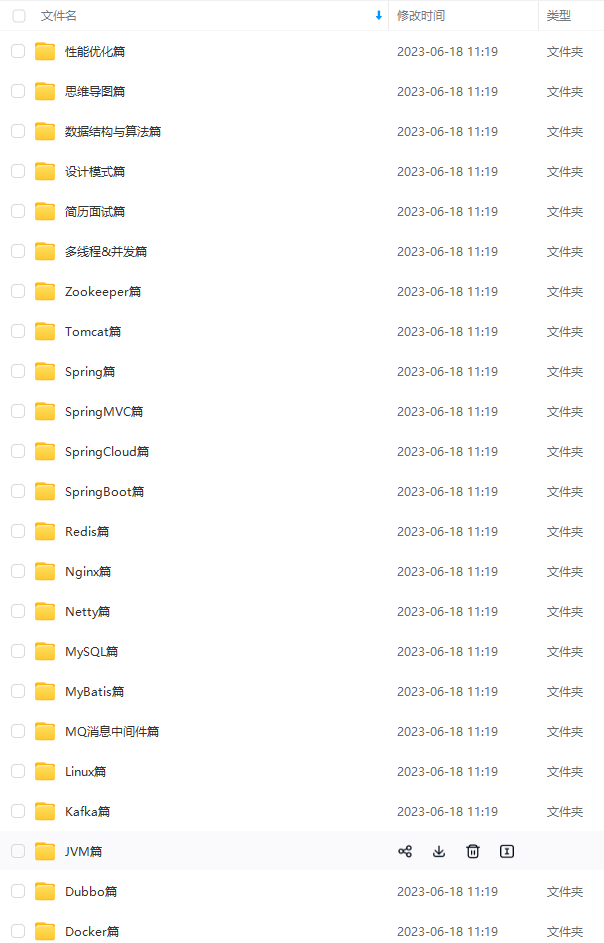
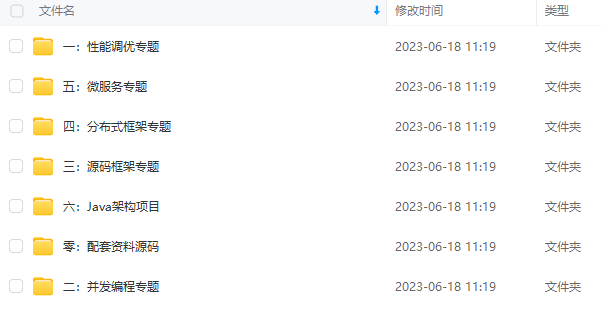
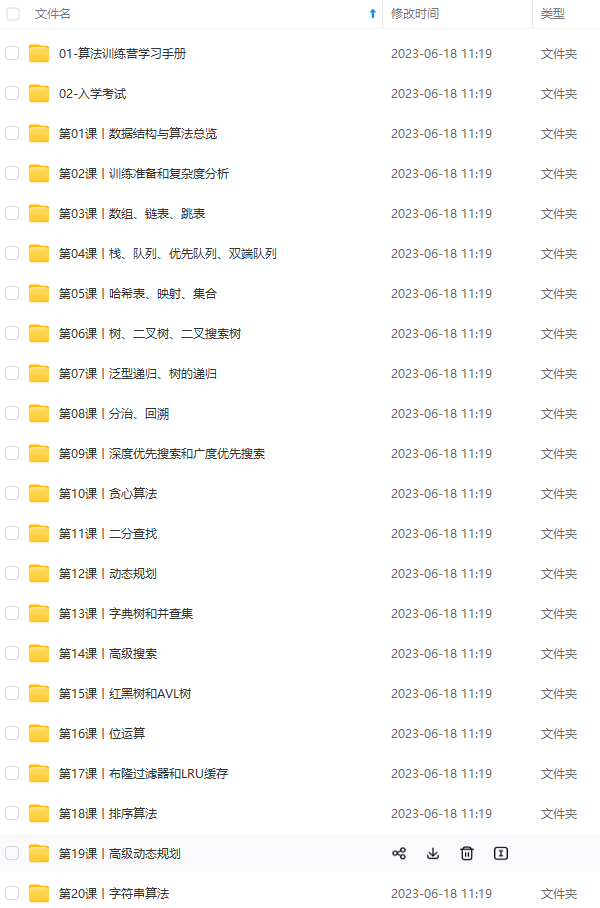

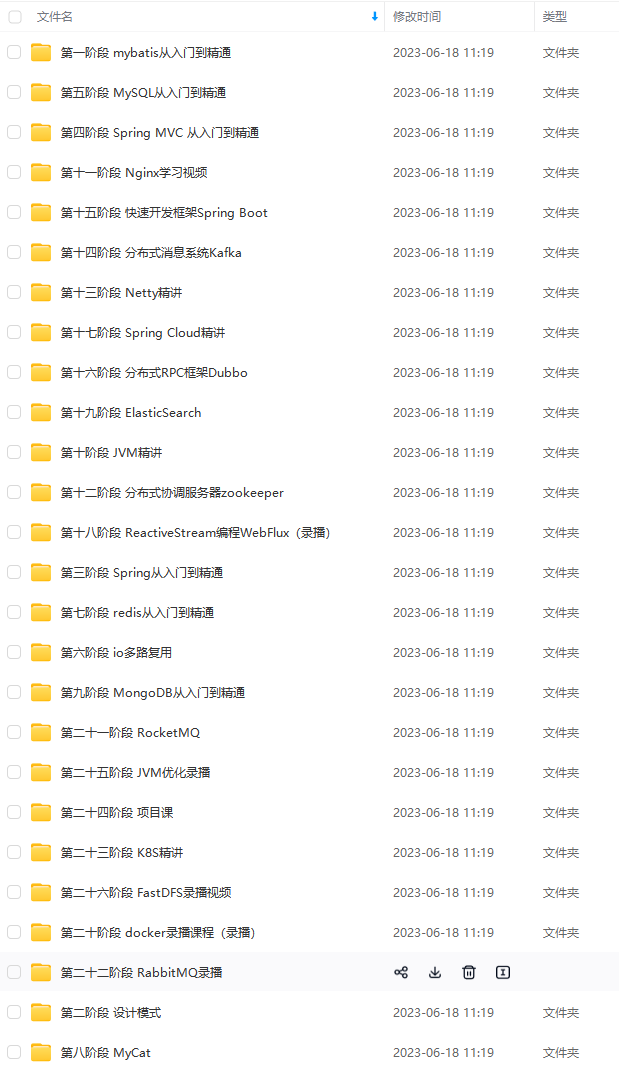
既有适合小白学习的零基础资料,也有适合3年以上经验的小伙伴深入学习提升的进阶课程,涵盖了95%以上Java开发知识点,真正体系化!
由于文件比较多,这里只是将部分目录截图出来,全套包含大厂面经、学习笔记、源码讲义、实战项目、大纲路线、讲解视频,并且后续会持续更新
如果你需要这些资料,可以添加V获取:vip1024b (备注Java)

正文
通过非直接缓冲区,想要将数据写入到物理磁盘中,或者是从物理磁盘读取数据。都需要经过JVM和操作系统,数据在两个地址空间中传输时,会copy一份保存在对方的空间中。所以费直接缓冲区的读取效率较低.。
只有ByteBuffer可以获得直接缓冲区,通过allocateDirect()获取的缓冲区为直接缓冲区,这些缓冲区是建立在物理内存之中的。
public static ByteBuffer allocateDirect(int capacity) {
return new DirectByteBuffer(capacity);
}
DirectByteBuffer(int cap) { // package-private
…
// 申请物理内存
boolean pa = VM.isDirectMemoryPageAligned();
…
}
直接缓冲区通过在操作系统和JVM之间创建物理内存映射文件加快缓冲区数据读/写入物理磁盘的速度。放到物理内存映射文件中的数据就不归应用程序控制了,操作系统会自动将物理内存映射文件中的数据写入到物理内存中。
========================================================================
Channel由java.nio.channels 包定义的。Channel 表示IO 源与目标打开的连接。Channel 类似于传统的“流”。只不过Channel 本身不能直接访问数据,Channel 只能与Buffer 进行交互 。
应用程序进行读写操作调用函数时,底层调用的操作系统提供给用户的读写API,调用这些API时会生成对应的指令,CPU则会执行这些指令。在计算机刚出现的那段时间,所有读写请求的指令都有CPU去执行,过多的读写请求会导致CPU无法去执行其他命令,从而CPU的利用率降低。
后来,DMA(Direct Memory Access,直接存储器访问)出现了。当IO请求传到计算机底层时,DMA会向CPU请求,让DMA去处理这些IO操作,从而可以让CPU去执行其他指令。DMA处理IO操作时,会请求获取总线的使用权。当IO请求过多时,会导致大量总线用于处理IO请求,从而降低效率 。
于是便有了Channel(通道),Channel相当于一个专门用于IO操作的独立处理器,它具有独立处理IO请求的能力,当有IO请求时,它会自行处理这些IO请求 。
-
本地文件IO
-
FileChannel
-
网络IO
-
SocketChanel、ServerSocketChannel:用于TCP传输
-
DatagramChannel:用于UDP传输
获得通道的方法
对象调用getChannel() 方法
获取通道的一种方式是对支持通道的对象调用getChannel() 方法。支持通道的类如下:
-
FileInputStream
-
FileOutputStream
-
RandomAccessFile
-
DatagramSocket
-
Socket
-
ServerSocket
例子:
import java.io.FileInputStream;
import java.io.FileOutputStream;
import java.io.IOException;
import java.net.DatagramSocket;
import java.net.ServerSocket;
import java.net.Socket;
import java.nio.channels.DatagramChannel;
import java.nio.channels.FileChannel;
import java.nio.channels.ServerSocketChannel;
import java.nio.channels.SocketChannel;
import java.nio.file.Paths;
public class demo2 {
public static void main(String[] args) throws IOException {
// 本地通道
FileInputStream fileInputStream = new FileInputStream(“zwt”);
FileChannel channel1 = fileInputStream.getChannel();
FileOutputStream fileOutputStream = new FileOutputStream(“zwt”);
FileChannel channel2 = fileOutputStream.getChannel();
// 网络通道
Socket socket = new Socket();
SocketChannel channel3 = socket.getChannel();
ServerSocket serverSocket = new ServerSocket();
ServerSocketChannel channel4 = serverSocket.getChannel();
DatagramSocket datagramSocket = new DatagramSocket();
DatagramChannel channel5 = datagramSocket.getChannel();
// 最后要关闭通道
FileChannel open = FileChannel.open(Paths.get(“zwt”));
SocketChannel open1 = SocketChannel.open();
}
}
getChannel()+非直接缓冲区
-
getChannel()获得通道
-
allocate()获得非直接缓冲区
通过非直接缓冲区读写数据,需要通过通道来传输缓冲区里的数据
import java.io.FileInputStream;
import java.io.FileOutputStream;
import java.io.IOException;
import java.nio.ByteBuffer;
import java.nio.channels.FileChannel;
public class demo4 {
public static void main(String[] args) {
FileInputStream is = null;
FileOutputStream os = null;
// 获得通道
FileChannel inChannel = null;
FileChannel outChannel = null;
// 利用 try-catch-finally 保证关闭
try {
is = new FileInputStream(“”);
os = new FileOutputStream(“”);
// 获得通道
inChannel = is.getChannel();
outChannel = os.getChannel();
// 获得缓冲区,用于在通道中传输数据
ByteBuffer byteBuffer = ByteBuffer.allocate(1024);
// 循环将字节数据放入到buffer中,然后写入磁盘中
while (inChannel.read(byteBuffer) != -1) {
// 切换模式
byteBuffer.flip();
outChannel.write(byteBuffer);
byteBuffer.clear();
}
} catch (IOException e) {
e.printStackTrace();
} finally {
if (inChannel != null) {
try {
inChannel.close();
} catch (IOException e) {
e.printStackTrace();
}
}
if (outChannel != null) {
try {
outChannel.close();
} catch (IOException e) {
e.printStackTrace();
}
}
if (is != null) {
try {
is.close();
} catch (IOException e) {
e.printStackTrace();
}
}
if (os != null) {
try {
os.close();
} catch (IOException e) {
e.printStackTrace();
}
}
}
}
}
open()+直接缓冲区
-
通过open获得通道
-
通过FileChannel.map()获取直接缓冲区
使用直接缓冲区时,无需通过通道来传输数据,直接将数据放在缓冲区内即可
import java.io.IOException;
import java.nio.MappedByteBuffer;
import java.nio.channels.FileChannel;
import java.nio.file.Paths;
import java.nio.file.StandardOpenOption;
public class demo5 {
public static void main(String[] args) throws IOException {
// 通过open()方法来获得通道
FileChannel inChannel = FileChannel.open(Paths.get(“”), StandardOpenOption.READ);
// outChannel需要为 READ WRITE CREATE模式
// READ WRITE是因为后面获取直接缓冲区时模式为READ_WRITE模式
// CREATE是因为要创建新的文件
FileChannel outChannel = FileChannel.open(Paths.get(“”), StandardOpenOption.READ, StandardOpenOption.WRITE, StandardOpenOption.CREATE);
// 获得直接缓冲区
MappedByteBuffer inMapBuf = inChannel.map(FileChannel.MapMode.READ_ONLY, 0, inChannel.size());
MappedByteBuffer outMapBuf = outChannel.map(FileChannel.MapMode.READ_WRITE, 0, inChannel.size());
// 字节数组
byte[] bytes = new byte[inMapBuf.limit()];
// 因为是直接缓冲区,可以直接将数据放入到内存映射文件,无需通过通道传输
inMapBuf.get(bytes);
outMapBuf.put(bytes);
// 关闭缓冲区,这里没有用try-catch-finally
inChannel.close();
outChannel.close();
}
}
通道间直接传输
public static void channelToChannel() throws IOException {
long start = System.currentTimeMillis();
// 通过open()方法来获得通道
FileChannel inChannel = FileChannel.open(Paths.get(“”), StandardOpenOption.READ);
// outChannel需要为 READ WRITE CREATE模式
// READ WRITE是因为后面获取直接缓冲区时模式为READ_WRITE模式
// CREATE是因为要创建新的文件
FileChannel outChannel = FileChannel.open(Paths.get(“”), StandardOpenOption.READ, StandardOpenOption.WRITE, StandardOpenOption.CREATE);
// 通道间直接传输
inChannel.transferTo(0, inChannel.size(), outChannel);
// 对应的还有transferFrom
// outChannel.transferFrom(inChannel, 0, inChannel.size());
inChannel.close();
outChannel.close();
}
直接缓冲区VS非直接缓冲区
// getChannel() + 非直接缓冲区耗时
708
// open() + 直接缓冲区耗时
115
// channel transferTo channel耗时
47
直接缓冲区的读写速度虽然很快,但是会占用很多很多内存空间。如果文件过大,会使得计算机运行速度变慢
分散读取
分散读取(Scattering Reads)是指从Channel 中读取的数据“分散”到多个Buffer 中。
注意:按照缓冲区的顺序,从Channel 中读取的数据依次将 Buffer 填满。
聚集写入
聚集写入(Gathering Writes)是指将多个Buffer 中的数据“聚集”到Channel。
按照缓冲区的顺序,写入position 和limit 之间的数据到Channel。
import java.io.FileInputStream;
import java.io.FileOutputStream;
import java.io.IOException;
import java.nio.ByteBuffer;
import java.nio.channels.FileChannel;
public class demo6 {
public static void main(String[] args) throws IOException {
FileInputStream is = new FileInputStream(“”);
FileOutputStream os = new FileOutputStream(“”);
FileChannel inChannel = is.getChannel();
FileChannel outChannel = os.getChannel();
// 获得多个缓冲区,并且放入到缓冲区数组中
ByteBuffer byteBuffer1 = ByteBuffer.allocate(50);
ByteBuffer byteBuffer2 = ByteBuffer.allocate(1024);
ByteBuffer[] byteBuffers = {byteBuffer1, byteBuffer2};
// 分散读取
inChannel.read(byteBuffers);
byteBuffer1.flip();
byteBuffer2.flip();
// 聚集写入
outChannel.write(byteBuffers);
}
}
=====================================================================
底层原理可见:操作系统-文件IO
比喻:
举个你去饭堂吃饭的例⼦,你好⽐⽤户程序,饭堂好⽐操作系统。
阻塞 I/O 好⽐,
你去饭堂吃饭,但是饭堂的菜还没做好,然后你就⼀直在那⾥等啊等,
等了好⻓⼀段时间终于等到饭堂阿姨把菜端了出来(数据准备的过程),
但是你还得继续等阿姨把菜(内核空间)打到你的饭盒⾥(⽤户空间),
经历完这两个过程,你才可以离开。
⾮阻塞 I/O 好⽐,
你去了饭堂,问阿姨菜做好了没有,阿姨告诉你没,
你就离开了,过⼏⼗分钟,你⼜来,
饭堂问阿姨,阿姨说做好了,于是阿姨帮你把菜打到你的饭盒⾥,这个过程你是得等待的。
基于⾮阻塞的 I/O 多路复⽤好⽐,
你去饭堂吃饭,发现有⼀排窗⼝,饭堂阿姨告诉你这些窗⼝都还没做好菜,
等做好了再通知你,于是等啊等( select 调⽤中),过了⼀会阿姨通知你菜做好了,
但是不知道哪个窗⼝的菜做好了,你⾃⼰看吧。
于是你只能⼀个⼀个窗⼝去确认,后⾯发现 5 号窗⼝菜做好了,
于是你让 5 号窗⼝的阿姨帮你打菜到饭盒⾥,这个打菜的过程你是要等待的,虽然时间不⻓。
打完菜后,你⾃然就可以离开了。
异步 I/O 好⽐,
你让饭堂阿姨将菜做好并把菜打到饭盒⾥后,把饭盒送到你⾯前,整个过程你都不需要任何等待。
package NIOAndBIO;
import java.io.IOException;
import java.net.InetSocketAddress;
import java.nio.ByteBuffer;
import java.nio.channels.FileChannel;
import java.nio.channels.ServerSocketChannel;
import java.nio.channels.SocketChannel;
import java.nio.file.Paths;
import java.nio.file.StandardOpenOption;
public class BIO {
public static void main(String[] args) throws IOException {
Thread thread1 = new Thread(() -> {
try {
server();
} catch (IOException e) {
e.printStackTrace();
}
});
Thread thread2 = new Thread(() -> {
try {
client();
} catch (IOException e) {
e.printStackTrace();
}
});
thread1.start();
thread2.start();
}
public static void client() throws IOException {
// 创建客户端通道
SocketChannel socketChannel = SocketChannel.open(new InetSocketAddress(“127.0.0.1”, 2022));
// 读取信息 D:\bizhi\bizhi202008\wallhaven-kwp2qq.jpg
FileChannel fileChannel = FileChannel.open(Paths.get(“D:\\bizhi\\bizhi202008\\wallhaven-kwp2qq.jpg”), StandardOpenOption.READ);
// 创建缓冲区
ByteBuffer byteBuffer = ByteBuffer.allocate(1024);
// 写入数据
while (fileChannel.read(byteBuffer) != -1) {
byteBuffer.flip();
socketChannel.write(byteBuffer);
byteBuffer.clear();
}
fileChannel.close();
socketChannel.close();
}
public static void server() throws IOException {
// 创建服务端通道
ServerSocketChannel serverSocketChannel = ServerSocketChannel.open();
FileChannel fileChannel = FileChannel.open(Paths.get(“D:\\bizhi\\bizhi202008\\wallhaven-kwp2qq.jpg”), StandardOpenOption.WRITE, StandardOpenOption.CREATE);
// 绑定链接
serverSocketChannel.bind(new InetSocketAddress(2022));
// 获取客户端的通道
SocketChannel socketChannel = serverSocketChannel.accept();
// 创建缓冲区
ByteBuffer byteBuffer = ByteBuffer.allocate(1024);
while (socketChannel.read(byteBuffer) != -1) {
byteBuffer.flip();
fileChannel.write(byteBuffer);
byteBuffer.clear();
}
socketChannel.close();
fileChannel.close();
serverSocketChannel.close();
}
}
package NIOAndBIO;
import java.io.IOException;
import java.net.InetSocketAddress;
import java.nio.ByteBuffer;
import java.nio.channels.SelectionKey;
import java.nio.channels.Selector;
import java.nio.channels.ServerSocketChannel;
import java.nio.channels.SocketChannel;
import java.util.Iterator;
import java.util.Scanner;
public class NIO {
public static void main(String[] args) {
Thread thread1 = new Thread(()->{
try {
server();
} catch (IOException e) {
e.printStackTrace();
}
});
Thread thread2 = new Thread(()->{
try {
client();
} catch (IOException e) {
e.printStackTrace();
}
});
thread1.start();
thread2.start();
}
public static void client() throws IOException {
SocketChannel socketChannel = SocketChannel.open(new InetSocketAddress(“127.0.0.1”, 2020));
// 设置为非阻塞模式
socketChannel.configureBlocking(false);
ByteBuffer byteBuffer = ByteBuffer.allocate(1024);
Scanner scanner = new Scanner(System.in);
while (scanner.hasNext()) {
String str = scanner.next();
byteBuffer.put(str.getBytes());
byteBuffer.flip();
socketChannel.write(byteBuffer);
byteBuffer.clear();
}
byteBuffer.clear();
socketChannel.close();
}
public static void server() throws IOException {
ServerSocketChannel serverSocketChannel = ServerSocketChannel.open();
serverSocketChannel.configureBlocking(false);
serverSocketChannel.bind(new InetSocketAddress(2020));
// 获得选择器
Selector selector = Selector.open();
// 将通道注册到选择器中,设定为接收操作
最后
码字不易,觉得有帮助的可以帮忙点个赞,让更多有需要的人看到
又是一年求职季,在这里,我为各位准备了一套Java程序员精选高频面试笔试真题,来帮助大家攻下BAT的offer,题目范围从初级的Java基础到高级的分布式架构等等一系列的面试题和答案,用于给大家作为参考
以下是部分内容截图

网上学习资料一大堆,但如果学到的知识不成体系,遇到问题时只是浅尝辄止,不再深入研究,那么很难做到真正的技术提升。
需要这份系统化的资料的朋友,可以添加V获取:vip1024b (备注Java)

一个人可以走的很快,但一群人才能走的更远!不论你是正从事IT行业的老鸟或是对IT行业感兴趣的新人,都欢迎加入我们的的圈子(技术交流、学习资源、职场吐槽、大厂内推、面试辅导),让我们一起学习成长!
er.allocate(1024);
Scanner scanner = new Scanner(System.in);
while (scanner.hasNext()) {
String str = scanner.next();
byteBuffer.put(str.getBytes());
byteBuffer.flip();
socketChannel.write(byteBuffer);
byteBuffer.clear();
}
byteBuffer.clear();
socketChannel.close();
}
public static void server() throws IOException {
ServerSocketChannel serverSocketChannel = ServerSocketChannel.open();
serverSocketChannel.configureBlocking(false);
serverSocketChannel.bind(new InetSocketAddress(2020));
// 获得选择器
Selector selector = Selector.open();
// 将通道注册到选择器中,设定为接收操作
最后
码字不易,觉得有帮助的可以帮忙点个赞,让更多有需要的人看到
又是一年求职季,在这里,我为各位准备了一套Java程序员精选高频面试笔试真题,来帮助大家攻下BAT的offer,题目范围从初级的Java基础到高级的分布式架构等等一系列的面试题和答案,用于给大家作为参考
以下是部分内容截图
[外链图片转存中…(img-E6ow04uE-1713455846149)]
网上学习资料一大堆,但如果学到的知识不成体系,遇到问题时只是浅尝辄止,不再深入研究,那么很难做到真正的技术提升。
需要这份系统化的资料的朋友,可以添加V获取:vip1024b (备注Java)
[外链图片转存中…(img-hAJgnRPw-1713455846150)]
一个人可以走的很快,但一群人才能走的更远!不论你是正从事IT行业的老鸟或是对IT行业感兴趣的新人,都欢迎加入我们的的圈子(技术交流、学习资源、职场吐槽、大厂内推、面试辅导),让我们一起学习成长!








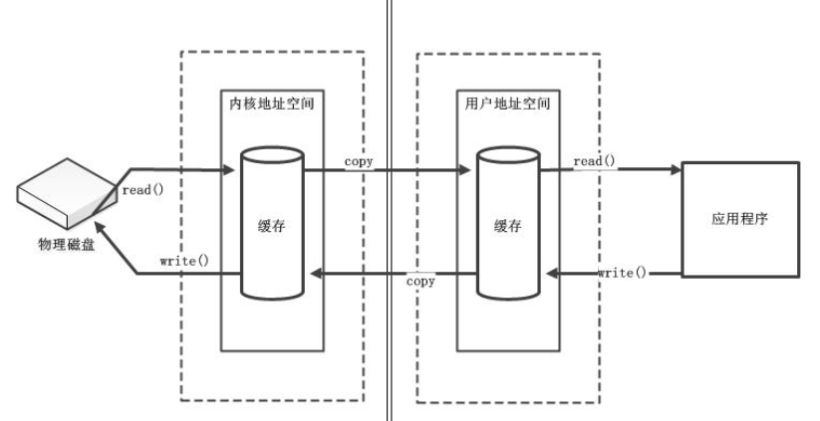
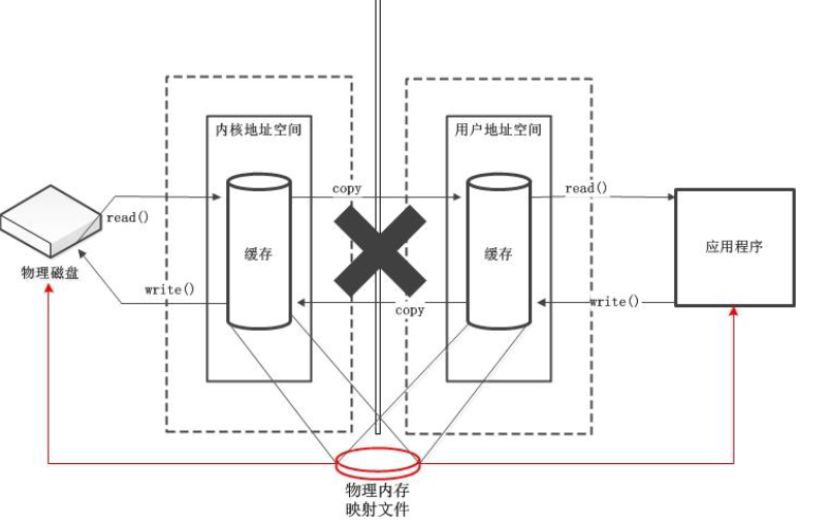
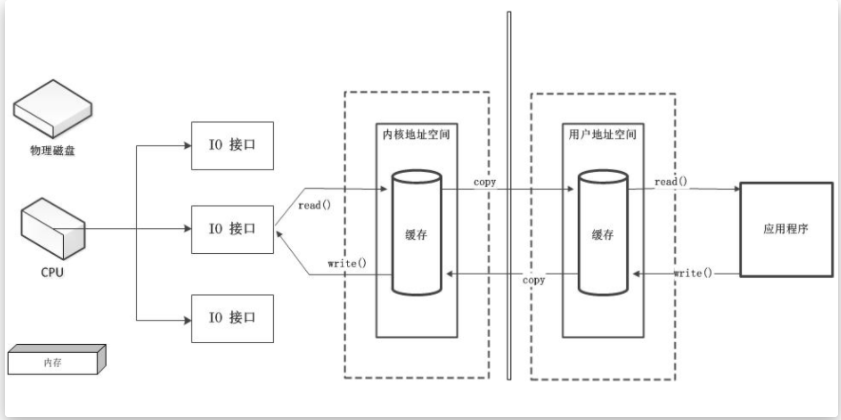
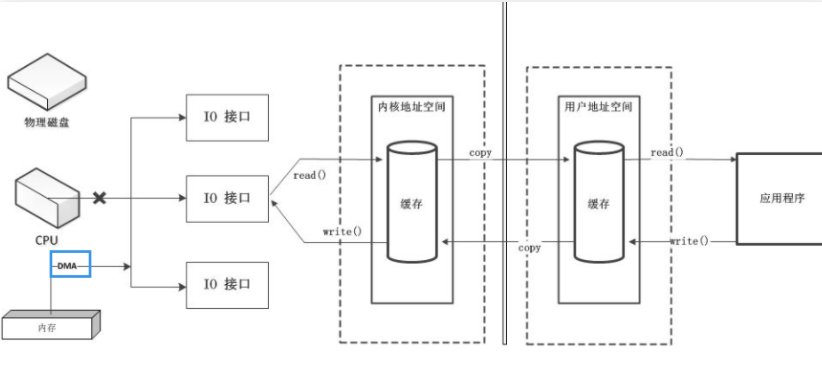
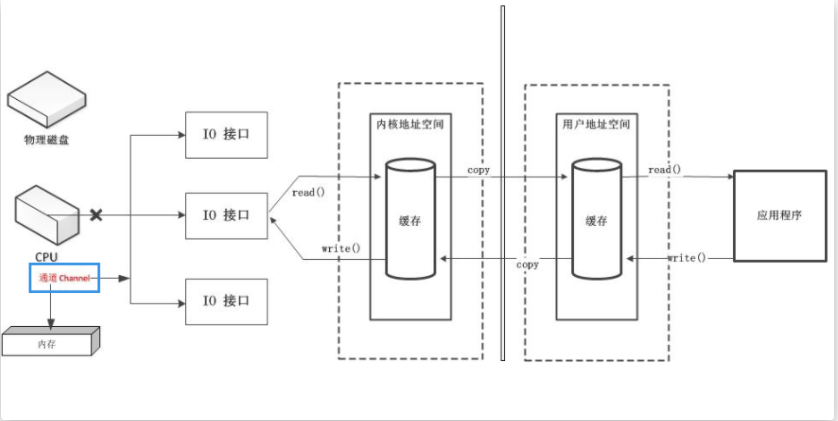















 7148
7148

 被折叠的 条评论
为什么被折叠?
被折叠的 条评论
为什么被折叠?








